Jyothsna Padmakumar Bindu
Extending Policy from One-Shot Learning through Coaching
May 13, 2019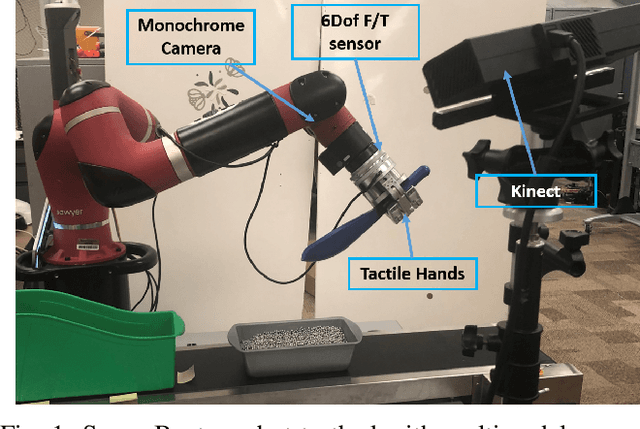
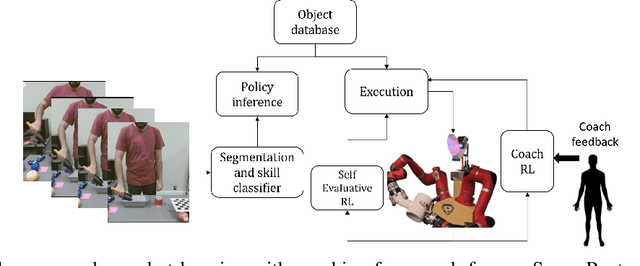
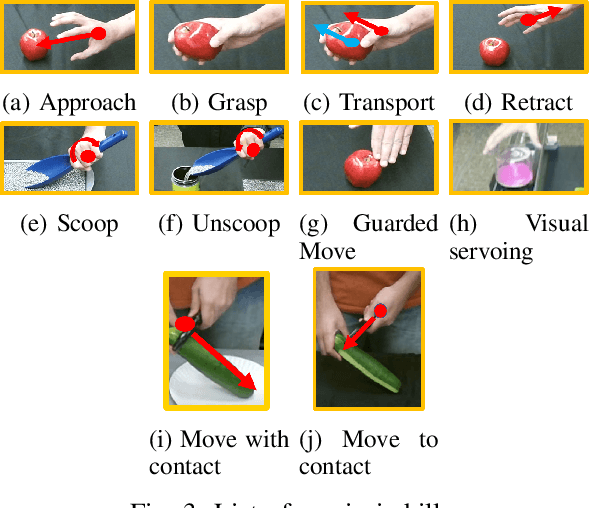
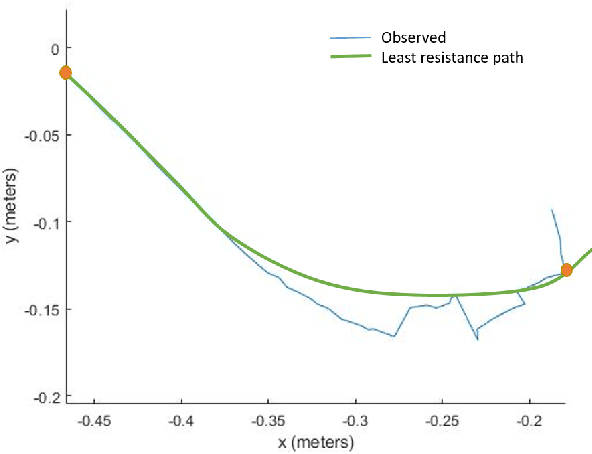
Abstract:Humans generally teach their fellow collaborators to perform tasks through a small number of demonstrations. The learnt task is corrected or extended to meet specific task goals by means of coaching. Adopting a similar framework for teaching robots through demonstrations and coaching makes teaching tasks highly intuitive. Unlike traditional Learning from Demonstration (LfD) approaches which require multiple demonstrations, we present a one-shot learning from demonstration approach to learn tasks. The learnt task is corrected and generalized using two layers of evaluation/modification. First, the robot self-evaluates its performance and corrects the performance to be closer to the demonstrated task. Then, coaching is used as a means to extend the policy learnt to be adaptable to varying task goals. Both the self-evaluation and coaching are implemented using reinforcement learning (RL) methods. Coaching is achieved through human feedback on desired goal and action modification to generalize to specified task goals. The proposed approach is evaluated with a scooping task, by presenting a single demonstration. The self-evaluation framework aims to reduce the resistance to scooping in the media. To reduce the search space for RL, we bootstrap the search using least resistance path obtained using resistive force theory. Coaching is used to generalize the learnt task policy to transfer the desired quantity of material. Thus, the proposed method provides a framework for learning tasks from one demonstration and generalizing it using human feedback through coaching.
Self-Evaluation in One-Shot Learning from Demonstration of Contact-Intensive Tasks
Apr 03, 2019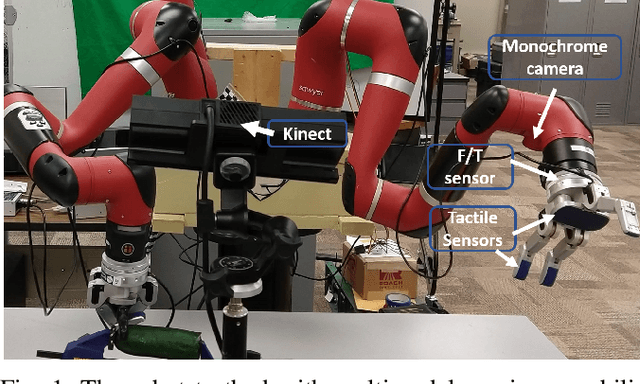
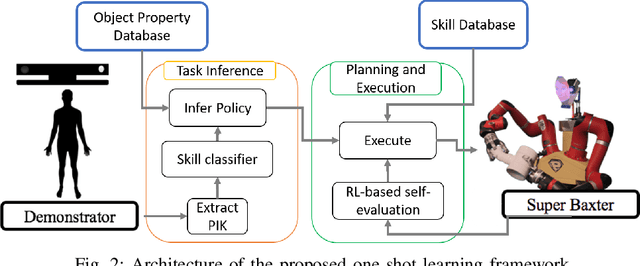
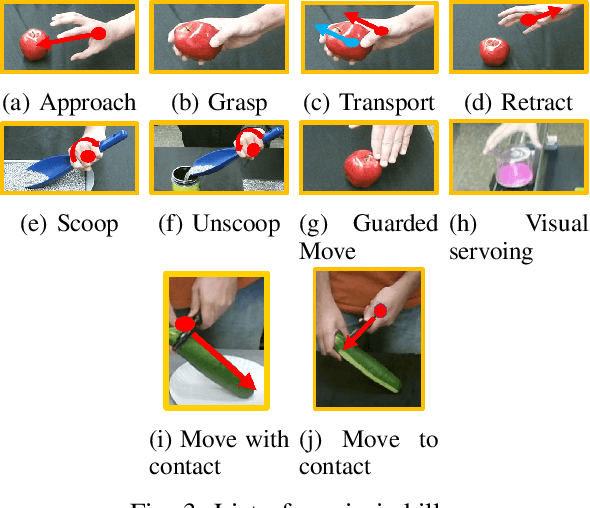
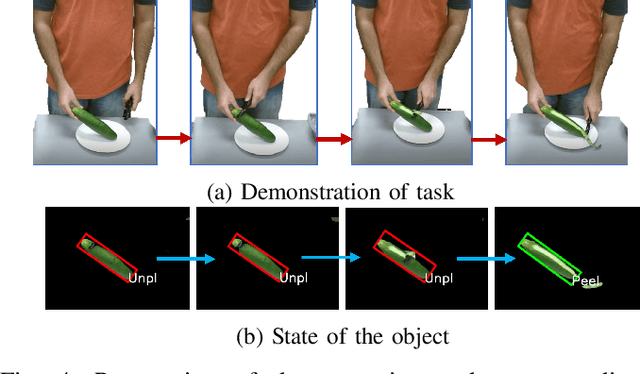
Abstract:Humans naturally "program" a fellow collaborator to perform a task by demonstrating the task few times. It is intuitive, therefore, for a human to program a collaborative robot by demonstration and many paradigms use a single demonstration of the task. This is a form of one-shot learning in which a single training example, plus some context of the task, is used to infer a model of the task for subsequent execution and later refinement. This paper presents a one-shot learning from demonstration framework to learn contact-intensive tasks using only visual perception of the demonstrated task. The robot learns a policy for performing the tasks in terms of a priori skills and further uses self-evaluation based on visual and tactile perception of the skill performance to learn the force correspondences for the skills. The self-evaluation is performed based on goal states detected in the demonstration with the help of task context and the skill parameters are tuned using reinforcement learning. This approach enables the robot to learn force correspondences which cannot be inferred from a visual demonstration of the task. The effectiveness of this approach is evaluated using a vegetable peeling task.
DESK: A Robotic Activity Dataset for Dexterous Surgical Skills Transfer to Medical Robots
Mar 03, 2019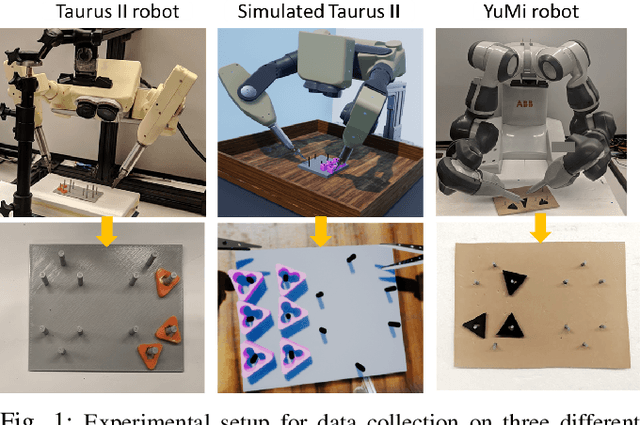
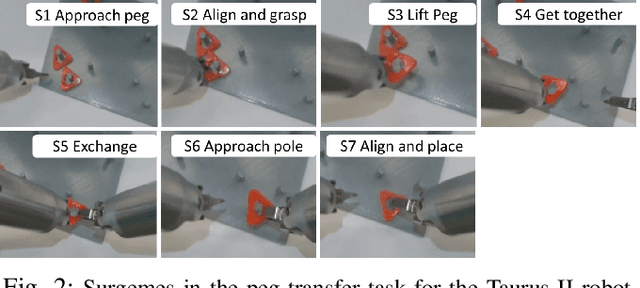
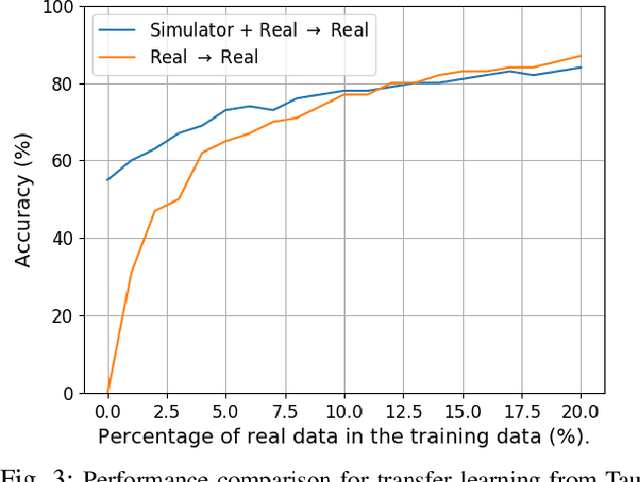
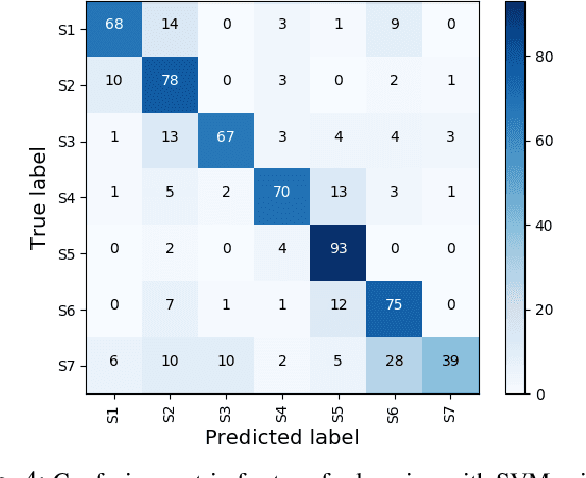
Abstract:Datasets are an essential component for training effective machine learning models. In particular, surgical robotic datasets have been key to many advances in semi-autonomous surgeries, skill assessment, and training. Simulated surgical environments can enhance the data collection process by making it faster, simpler and cheaper than real systems. In addition, combining data from multiple robotic domains can provide rich and diverse training data for transfer learning algorithms. In this paper, we present the DESK (Dexterous Surgical Skill) dataset. It comprises a set of surgical robotic skills collected during a surgical training task using three robotic platforms: the Taurus II robot, Taurus II simulated robot, and the YuMi robot. This dataset was used to test the idea of transferring knowledge across different domains (e.g. from Taurus to YuMi robot) for a surgical gesture classification task with seven gestures. We explored three different scenarios: 1) No transfer, 2) Transfer from simulated Taurus to real Taurus and 3) Transfer from Simulated Taurus to the YuMi robot. We conducted extensive experiments with three supervised learning models and provided baselines in each of these scenarios. Results show that using simulation data during training enhances the performance on the real robot where limited real data is available. In particular, we obtained an accuracy of 55% on the real Taurus data using a model that is trained only on the simulator data. Furthermore, we achieved an accuracy improvement of 34% when 3% of the real data is added into the training process.
 Add to Chrome
Add to Chrome Add to Firefox
Add to Firefox Add to Edge
Add to Edge